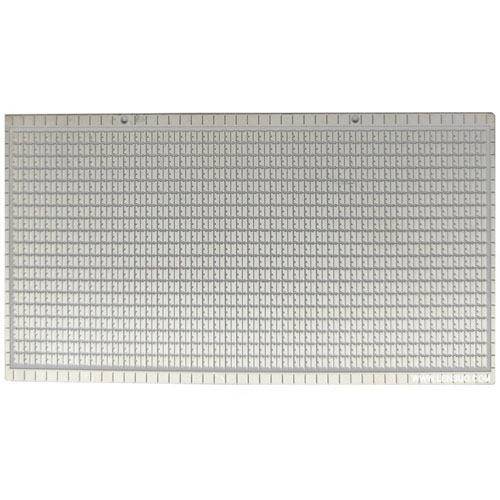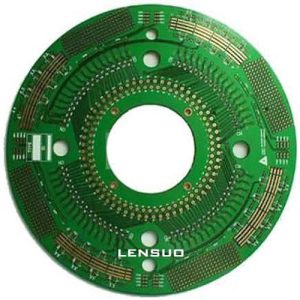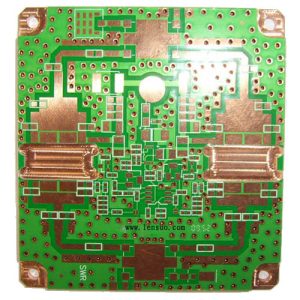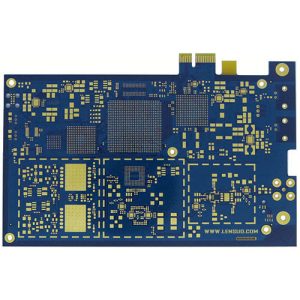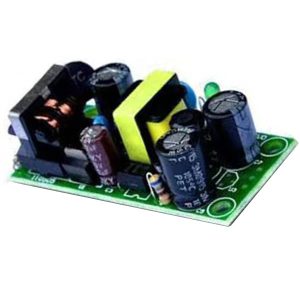Description
Ceramic PCB is a circuit board made using an aluminum oxide (Al2O3) or aluminum nitride (AlN) ceramic substrate. The ceramic PCB is a PCB made from a substrate of ceramic material, usually an inorganic dielectric, rather than a conventional fiberglass or epoxy substrate. It is an electronic circuit board made of a thin insulating layer of ceramic material with a metallic component.
Ceramic alumina (Al2O3) circuit boards or ceramic aluminum nitride (AlN) circuit boards have excellent electrical insulation properties, high thermal conductivity characteristics, excellent soft brazing, and high adhesion strength, and can be like the traditional PCB circuit boards can be etched out of a variety of graphics, with a large current-carrying capacity. Therefore, the ceramic circuit board has become a high-power power electronic circuit used in ceramic substrates.
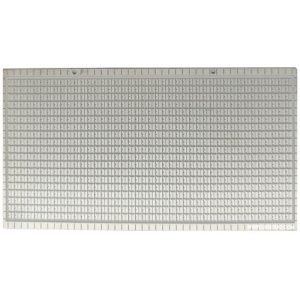
1. Ceramic PCB materials
When selecting ceramic materials, the two basic characteristics to pay attention to are the PCB thermal conductivity and coefficient of thermal expansion (CTE).
(1) Aluminum oxide (Al 2 O 3 )
Alumina is an inorganic compound also known as aluminum oxide. It is an advanced material made from aluminum and oxygen. It is usually white but varies in purity. The color can be pink to almost brown. This compound has no odor and is in the form of a crystalline powder, but is insoluble in water.
Of all the oxide ceramics, alpha-phase alumina is the hardest. It has an alumina content of more than 95% and is an excellent electrical insulator with a high resistivity of about 1 × 1014 Ω-cm. Common purities range from 94% to 99%. The desired color, robustness, size, and shape should be easy to achieve. These industrial oxide ceramics have excellent thermal and corrosion stability, excellent mechanical and dielectric strength, and can even form hermetic seals. Commonly available 96% alumina has a thermal conductivity value of 25.0 W/(m-K) and a CTE of 4.5 to 10.9 x 10-6/K.
(2) Aluminum Nitride (AIN)
Aluminum nitride (AIN) is a non-oxide semiconductor technical grade ceramic material. The compound has a hexagonal crystal structure and is blue-white in pure form. Aluminum nitride is a synthetic ceramic compound that is usually white or gray and may sometimes be yellowish. One of the best ceramic substrate materials available is aluminum nitride (AlN). It has electrical insulating properties and a low coefficient of thermal expansion (CTE) of 4 to 6 x 10-6 K1 (between 20 and 1000°C), very close to and similar to silicon wafers, and is best suited for use in high current and high-temperature environments.
(3) Beryllium oxide (BeO)
Known as glycine or glucinium oxide, as the name implies, it is derived from beryl or the mineral bromeliad. It is a solid crystalline inorganic compound that is white.
In addition to its good electrical insulating properties, its thermal conductivity is higher than that of any other non-metal [(209 to 330 W/(m-K)], except diamond, which even exceeds that of some metals. Beryllium oxide has rigid bonds between its atoms, just like diamond. It transfers heat through these strong bonds in the form of vibrations, thus minimizing energy loss.
This refractory compound has a high melting point of 2506.85 °C to 2575 °C, a boiling point of 3905 °C, and a CTE of 7.4 to 8.9 x 10-6/K. Because of these special properties, beryllium oxide has a wide range of applications in the electronics field and is a valuable resource. Due to its high melting point, excellent thermal conductivity, and good electrical resistance, it is used to provide air or liquid cooling in applications where PCBs are exposed to high temperatures or space-constrained high-density PCBs.
2. Types of Ceramic PCBs
(1) High Temperature Ceramic PCBs
Often referred to as High-Temperature Co-Fired Ceramic (HTCC) PCBs, they are constructed by mixing adhesives, lubricants, solvents, plasticizers, and alumina to make a raw ceramic. HTCC PCBs are built from scratch using raw ceramic substrate materials. No glass material is ever added during the manufacturing process, and circuits are baked at between 1600 and 1700 degrees Celsius for up to 48 hours after lamination. All HTCC baking is done in a gaseous environment, such as hydrogen.
(2) Low Temperature Ceramic PCB
Low-temperature co-fired ceramic (LTCC) PCBs are made by mixing crystalline glass with a bonding substance on a metal plate with a gold paste. The circuits are then cut and laminated before being placed in a gaseous oven at approximately 900 degrees Celsius. Low-temperature co-fired ceramic PCBs have less warpage and improved shrinkage resistance. In other words, they have excellent mechanical strength and thermal conductivity compared to HTCC and other types of ceramic PCBs. The thermal benefits of LTCC provide an advantage when using heat sink products such as LED lights.
The only difference in the production process between HTCC PCBs and LTCC PCBs is that HTCC PCBs are baked in a gaseous environment at temperatures of approximately 1600-1700 °C.
(3) Thick Film Ceramic PCB
Thick film ceramic PCBs add gold, silver, copper, and dielectric pastes to a ceramic base material, and the paste is baked in a nitrogen atmosphere at up to 1,000 degrees Celsius. The main advantage of thick film ceramic materials over conventional PCBs is that thick film ceramics prevent copper oxidation.
3. Advantages of ceramic PCB
(1) Excellent thermal conductivity. Values range from 25 to 330 W/(m-K) based on the materials used. It far exceeds FR4 PCBs by a factor of more than 20. With its ability to dissipate heat, ceramic performs better and prevents equipment damage due to high temperatures.
(2) Resistant to chemical corrosion. Because of its inorganic material, it works and lasts longer. In addition, it is resistant to chemical corrosion.
(3) Compatible mechanical strength.
(4) Easy high-density tracking.
(5) CTA component compatibility.
4. Disadvantages of Ceramic PCB
(1) High cost.
(2) Reduced usability.
(3) Fragile.
5. Specific uses of ceramic PCB
Ceramic PCB due to thermal performance, current-carrying capacity, insulation, coefficient of thermal expansion, etc., are much better than ordinary glass fiber PCB board, which is widely used in high-power power electronic modules, aerospace, military electronics, and other products.
(1) Memory Module
(2) Receiving and transmission modules
(3) Multi-layer interconnect boards
(4) Analog/Digital PCBs
(5) Solar panels
(6) Power Transmitters
(7) Semiconductor coolers
(8) High Power LEDs

